#Columbia Basin Pygmy Rabbit
Explore tagged Tumblr posts
Text
25th of September 2024: Pygmy Rabbit

Today’s critter of the day is the Pygmy Rabbit (Brachylagus idahoensis). They’re from the western USA and are the smallest rabbits in North America, being only 23-30 cm in length and weighing around 400g [1].
They prefer to have habitat near perennial streams, meaning streams that flow all year round. This is likely because they tend to provide deep soils that accommodate their reliance on sagebrush and allow them to bury [2]. They absolutely love sagebrush, with it being used for both shelter and food [1]. During winter sagebrush makes up 99% of their diet, and while in summer they add in some grasses as well, it still makes up a good 30-40% [3].
They are one of two North American rabbits who form extensive burrow systems. Pregnant females in particular will dig natal burrows which consist of a tunnel and a chamber with nesting material such as hair [4]. Other burrows may have several entrances, with one even recording up to 10. In general, Pygmy Rabbits stay low to the ground rather than hopping around [3]. This is their main defence strategy against predators [5], which tend to be coyotes, birds, and weasels [6]
Overall they have a very broad range and so are considered of Least Concern by the IUCN (at least back in 2016) [7], however from state to state this assessment may vary. For example in Nevada they are considered a priority species and are state protected [5] and in the Columbia Basin they were considered extinct due to the clearing and overgrazing of sagebrush, however there have been reintroduction programs to revitalise those populations [7].
Sources: [1] [2] [3] [4] [5] [6] [7] [Image]
#as requested for a friend’s birthday: a rabbit!#critter of the day#critteroftheday#lagomorph#rabbit#bunny#zoology#animal#animal facts#animal species#rabbit species
4 notes
·
View notes
Text
If you've been following my blog for a while now, you may recall me posting about The Columbia Basin Pygmy Rabbit and the devastating effect the 2020 Pearl Hill wildfire (along with past and no doubt future ones) had on this rare species. Now, there's an update:
Fires, made worse by climate change, along with shrinking and degraded habitat, disease, weeds—there always seems to be a new obstacle in the way of the rabbit’s recovery. “We often joke it’s like a bad movie,” says Gallie.
Still, even bad movies can have a happy ending. In summer 2021 the population of wild pygmy rabbits in Washington’s sagebrush sea was up to about 100, according to Gallie. That may not sound like many. But it’s a lot more than 16.
Those 100 rabbits represent two decades of intensive effort by biologists, research institutions, The Nature Conservancy, federal and state agencies, volunteers, landowners and private citizens. And ultimately, the species’ recovery is more about potential for growth than current numbers, says Hanson. That means preserving and restoring high-quality, protected habitat where newly released pygmy rabbits and their offspring can live and reproduce happily ever after, even as climate change exacerbates fires and drought.
After the 2015 fire, a new mobile enclosure and release area were placed on land owned by Peter Lancaster and the estate of Paul Schuster. In March 2021, Lancaster and Schuster’s estate donated a 282-acre parcel to TNC, specifically for Columbia Basin pygmy rabbit recovery. The acquisition expanded TNC’s Beezley Hills Preserve and offered new reintroduction habitat that had not been ruined by fire.
In spring 2021, Gallie was thrilled to see a population boom in this unburned portion of Beezley Hills. With new generations of wild-born pygmy rabbits breeding on their own, Gallie says the wild population is approaching a self-sustaining level. “We’re getting to the point where we can [eventually] remove ourselves from the equation,” he says. Though an indiscriminate tragedy like fire could change things at any time, Gallie is excited about this localized rabbit revival. “We now get to see the positive results of our activities for the last four years,” he says. “It was worth the wait.”
#Columbia Basin Pygmy Rabbit#Washington state#eastern Washington#conservation#rabbits#sagebrush sea#wildfires#endangered species#pearl hill
225 notes
·
View notes
Photo

Ocelot, Leopardus paradalis. Population 195, San Diego Zoo, San Diego, California
RARE: Portraits of America’s Endangered Species
All photographs © Joel Sartore.

Mexican Gray Wolf, Canis lupus baileyi; population 392; Wild Candid Center, Eureka, Missouri.

St. Andrew Beach Mouse, Peromyscus polionotus peninsular; population ≤ 6,000; Panama City, Florida.

Columbia Basin Pygmy Rabbit, Brachylagus idahoensis; population 0; Oregon Zoo, Portland, Oregon
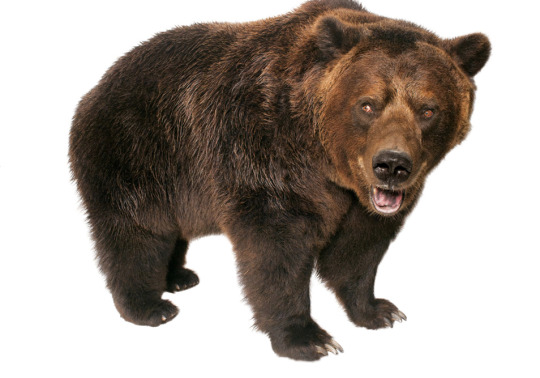
Grizzly Bear, Ursus arctos horribilis; population about 1,500. Sedgewick County Zoo, Wichita, Kansas.

California Condor, Gymnogyps californianus; population 356; Phoenix Zoo, Phoenix Arizona.

Dehli Sands Flower-Loving Fly, Rhaphiomidas terminatus abdominalis; population less than 1,000; Colton, California.
#joel sartore#photographer#mexican gray wolf#wolf#nature#st andrew beach mouse#endangered species#columbia basin pygmy rabbit#wildlife#grizzly bear#california condor#dehli sands flower-loving fly
5 notes
·
View notes
Photo
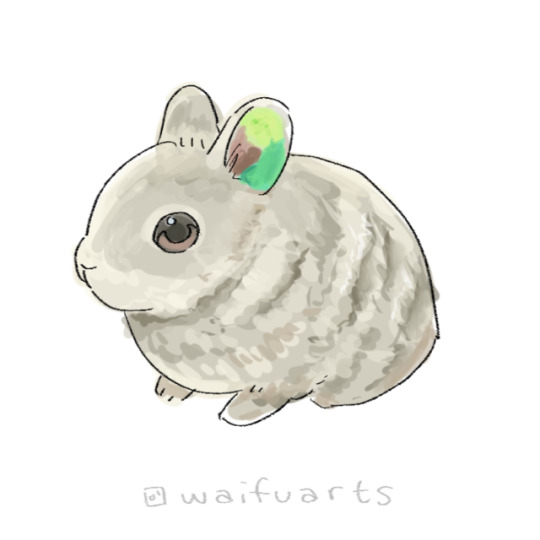
rare round friend
15 notes
·
View notes
Photo
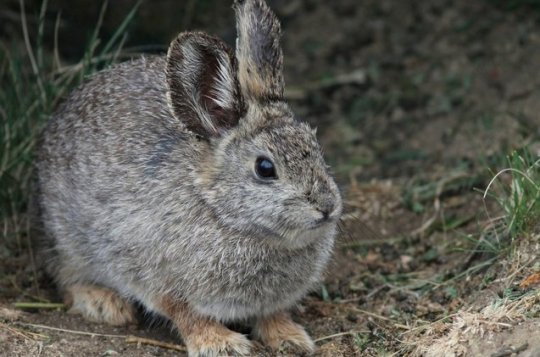
Pure-bred Columbia Basin Pygmy Rabbit’s like this one when completely extinct in 2008. This species was threatened by dehabitization (loss of habitat) (a form of climate change). Below are some facts about this rabbit.
Population: 0
Scientific Name: Brachylagus idahoensis
Date of Extinction: August 18th, 2008
Range: Single Columbia Basin Area of Washington State, USA
Vertebrate Class: Mammal
Diet: Herbivore
0 notes
Link

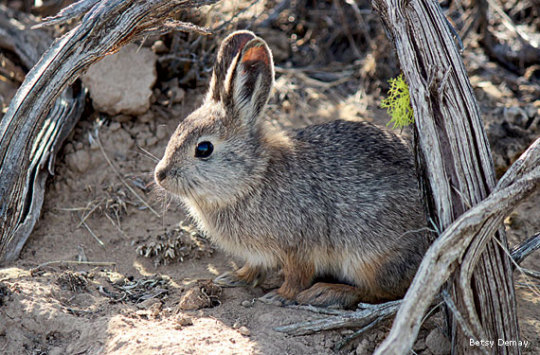
Excerpt from this story from EcoWatch:
The wildfires that roared through Eastern Washington in September had a devastating impact on an extremely endangered species of rabbit.
The fast-moving Pearl Hill and Cold Springs fires scorched a habitat for Columbia Basin pygmy rabbits on Sept. 7, wiping out around half of the species' recovering population, High Country News reported Monday.
Gallie leads a recovery program for North America's smallest rabbits, which are about the size of a grapefruit, according to High Country News. Their population was devastated during the 20th century by development, agriculture and wildfires and, in 2001, the last 16 were gathered from the wild for a captive breeding program. Scientists bred the Washington rabbits with pygmy rabbits from the Great Basin of the intermountain West and began to reintroduce them to the wild in 2011, according to The Wenatchee World.
To defend against wildfires, the rabbits were released in three different locations: Jameson Lake, Beezley Hills and Sagebrush Flats. It was the Jameson Lake population that was lost to September's flames.
"We have pygmy rabbits well distributed on the landscape in two other areas, so not all is lost," Gallie told High Country News. "We will just have to chart a now more challenging path to recovery."
However, WDFW manager of wildlife diversity Hannah Anderson told The Seattle Times that the department had been focusing on the Jameson Lake population and had expected it to increase.
"It's devastating," Anderson said. "A catastrophic loss and a significant loss in recovery."
26 notes
·
View notes
Text
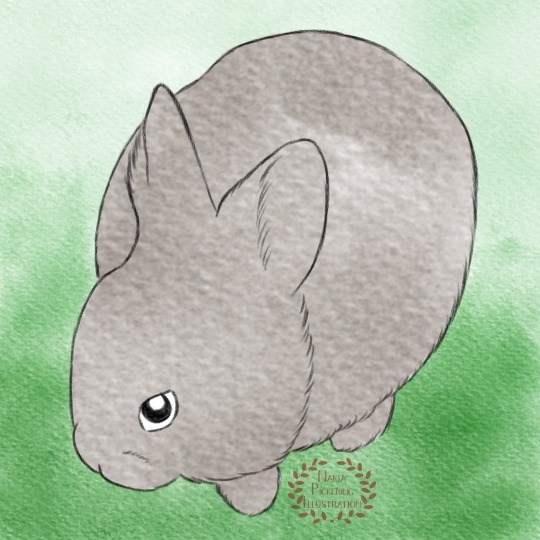
Lunar New Year might be over, but that doesn’t mean I won’t still post about rabbits! This one is the Pygmy Rabbit! Here’s some facts about them:
- The smallest species of rabbit in North America
- They depend on sagebrush not only for food, but also for cover
- The only rabbits in Nevada that dig their own burrows, though they sometimes use dens made by other animals.
- Adults weigh less than one pound
- In Washington State’s Columbia Basin, the remaining pygmy rabbit population is endangered and faces compounding threats.
- The fracturing of its shrub-steppe home in Central Washington, an increasing occurrence of wildfire, and a new form of rabbit hemorrhagic disease all push the species toward extinction in the region
#pygmy rabbit#illustration#wildlife art#wildlife artist#watercolor#maine illustrator#maineartist#procreate#watercolor illustration#wildlife illustration#digital watercolor#digital art#rabbit art#year of the rabbit#rabbit#lunar new year
8 notes
·
View notes
Photo
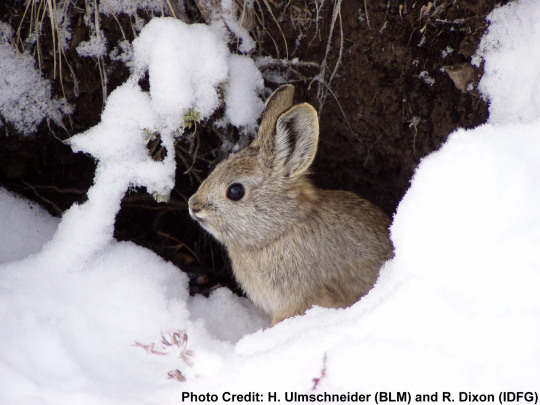
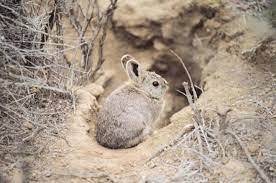
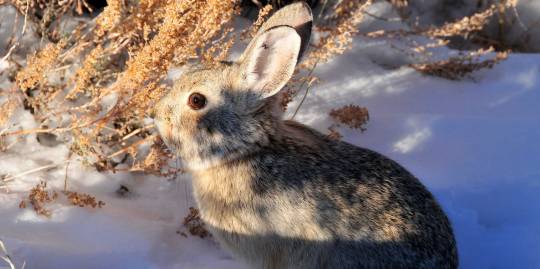
The Columbia Basin Pygmy Rabbit: A Big Plan to Save a Tiny Rabbit
For two decades scientists have fought to rescue America's smallest bunny.
For thousands of years, these rabbits have lived on the Columbia Plateau, which stretches across eastern Washington and Oregon and into Idaho. Under normal circumstances, they play a critical role in the local food chain: They feast on the plateau’s pungent sagebrush for at least half of their diet, and in turn raptors, weasels and coyotes feast on them.
But human presence has battered their existence. The rabbits’ native habitat has been fragmented by development and farming. In 2001, biologists monitoring the rabbits could only find one colony, landing the species on the federal endangered species list. With fewer than 50 individuals left, the Columbia Basin pygmy rabbit was a whisker away from extinction.
In the last two decades, hopeful state and federal wildlife biologists, rabbit fans, farmers and ranchers, conservation research zoos, and nonprofits have all come together to give the rabbits a fighting chance against seemingly insurmountable odds. It’s not easy—even when the species they’re trying to save can breed like, well, rabbits...
Read more: https://www.nature.org/en-us/magazine/magazine-articles/pygmy-rabbits/
#endangered#pygmy rabbit#rabbit#lagomorph#mammal#animals#nature#north america#conservation#environment
75 notes
·
View notes
Photo

Among the smallest rabbit breeds are the Dwarf Lop, the Columbia Basin Pygmy, the Mini Rex, the Holland Lop, and the English Angora. All of these rabbit breeds are very cute and can make a very nice pets. They are also very easy to care for. https://backyardbunnynews.com/what-are-the-smallest-rabbit-breeds/?feed_id=686&_unique_id=6377d144b2d2f
2 notes
·
View notes
Photo

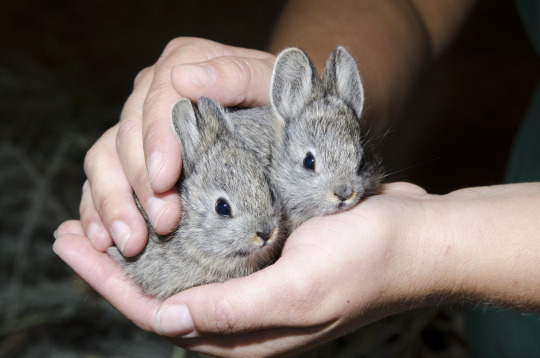
Introducing the Columbia Basin pygmy rabbit- the smallest rabbit species in North America!
These tiny bunnies-- weighing just under a pound and less than a foot long-- are native to the Columbia Basin in Washington State. Although the pygmy rabbit (Brachylagus idahoensis) is common across the American Pacific Northwest, the Columbian Basin Pygmy Rabbit is considered genetically distinct, and is thus a subspecies. What’s unique about pygmy rabbits is that they’re one of only two rabbit species to dig their own burrows. Their habitats are typically areas with tall sagebrush, which they can hide and graze in. Like most rabbits, they feed on a vegetarian diet, including sagebrush, shrubs, and grasses. Like other rabbit species, pygmy rabbits also reproduce at a phenomenal rate; individuals become sexually mature at just one year, and a female can produce three litters of up to six pups each. What an incredible mom! But all that work takes its toll: the average lifespan of a pygmy rabbit is 3-5 years. Often times, predators such as coyotes, foxes, or hawks hunt them long before they succumb to old age.
Conservation status: The Columbia Basin Pygmy rabbit is considered to be critically endangered by the United States Fish and Wildlife Service; as of 2005 there were fewer than 50 individuals left in the wild. There are no known purebred individuals left. However, breeding and conservation efforts at the Oregon Zoo have been successful, and from 2011-2014, monitored, reintroduced crossbred populations improved steadily.
437 notes
·
View notes
Text
Other endangered species in North America:
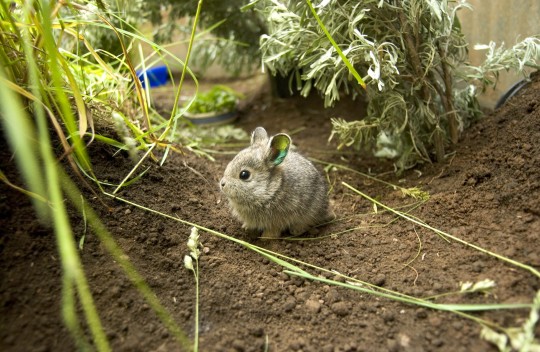
Columbia Basin Pygmy Rabbit

Blunt Nosed Leopard Lizard

Black footed ferret

Whooping crane

Florida panther
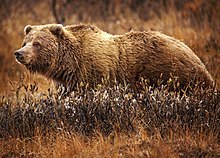
North American brown bear
19 notes
·
View notes
Text
The wildfires in the American West have burned millions of acres of diverse habitat up and down the coast. The devastation is overwhelming, and hard to come to grips with. I'd like to start that process by highlighting a species dramatically impacted by this year's fires:

This is the Columbia Basin Pygmy Rabbit, North America's smallest rabbit. For years it has hovered perilously close to extinction. Breeding efforts by Washington State and private institutions like the Oregon Zoo have slowly been building their numbers up over the past decade. But the recent Pearl Hill fire has delivered a terrible setback to these efforts: nearly half of the Columbia Basin Pygmy Rabbit population is believed to have been wiped out by it. This is not going to be easy to come back from. What can be done? Well, one thing is supporting the restoration of their habitat. They live amongst and feed on sagebrush. The restoration of sagebrush habitat destroyed by the Pearl Hill fire will require a concerted effort, taking perhaps 15 or 20 years of growth until it can support a population of the rabbits again. Since 2017 Conservation Northwest has been working on the Sagelands Heritage Program, which is aims to reestablish and maintain habitat not just for the Columbia Basin Pygmy Rabbit, but multiple species of Grouse, Badgers, Mule Deer, Pronghorn Antelope and Bighorn Sheep. Conservation Northwest is a respected organization that offers membership and accepts donations to further their work. If you have any money to spare during this difficult time, please consider sending it to this worthy cause.
Thank you!
#wildfires#columbia basin pygmy rabbit#rabbit#pearl hill fire#washington state#endangered species#sagebrush#donations#signal boost#wildlife#conservation#conservation northwest
106 notes
·
View notes
Text
Wildlife biologist and TV presenter Jeff Corwin joins WDFW in counting pygmy rabbits | News
Wildlife biologist and TV presenter Jeff Corwin joins WDFW in counting pygmy rabbits | News
Columbia Basin, Wash. – Each winter, the Washington Department of Fish and Wildlife and the USFWS Bureau of Fish and Wildlife count and hunt pygmy rabbits; This year, they’re joined by wildlife biologist and Wildlife Nation host Jeff Corwin. Pygmy rabbits lived across central Washington at one point, but evolution and wildfires combined have reduced their habitat to two small parts of the…
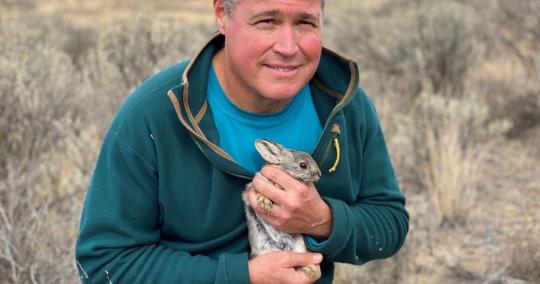
View On WordPress
#Biologist#Columbia Basin#downtown Washington#dwarf rabbits#Ecology#endangered species#Fish and Wildlife Bureau#Fish and Wildlife Department#food#Forest fires#home#Jeff Corwin#keep#Nation#number#rabbit#sagebrush#Sociology#usfws#Washington Department of Fish and Wildlife#Zoology
5 notes
·
View notes
Photo

“Today we're celebrating the global effort to save our planet's most imperiled species, like this baby Columbia Basin pygmy rabbit. The Oregon Zoo was the first zoo in the world to successfully breed these critically-endangered sagebrush dwellers. This little cutie was raised as part of a collaborative reintroduction program. The green ear markings are a temporary pigment used to identify individuals.”
quote and pic from https://www.instagram.com/oregonzoo/
376 notes
·
View notes
Text
Endemic species; highly-specific microhabitat preferences; close plant-animal cooperation; nearly-extinct creatures: Compelled to think about the endangered Columbia Basin subspecies/population of pygmy rabbit.
Neat photo of pygmy rabbit, because it depicts close relationship between sagebrush and the bunny:



Recent update:

If, while hiking through certain stretches of sagebrush in northern Grant County, one were to see a silent flash of brown in the underbrush, it might be the continent’s smallest species of Leporidae, the pygmy rabbit. More likely than not, a passerby would see nothing, even as they walked inches above their burrows — and unlike other species of rabbit, some of which steal the burrows made by more industrious creatures, the pygmy rabbit is the only one of its kind that digs its own. The quiet creatures, weighing at most 16 ounces, are nearly invisible [...].
And only a few decades ago, the Columbia Basin subspecies, isolated from others of its kind for at least 10,000 years, nearly invisible in their preferred habitats, had all but disappeared.
Once found throughout North Central Washington from Okanogan to Adams counties, by 2001, the last remaining population in Douglas County was blinking out of existence, said Jon Gallie, Wildlife Biologist with the state Department of Fish and Wildlife. [...] Between Douglas County and northern Grant County, around 200,000 acres of land has been set aside through incentives like the SAFE program, Gallie said, giving the department space to reintroduce species like the pygmy rabbit. In 2010, the first enclosures were built, fencing in a few dozen of the tiny critters in open acreage [...].
It’s the offspring of those rabbits, which can have up to four litters a year, that then get taken out of the enclosures and allowed to make their way inside of three designated recovery areas a good ways north of Quincy and Ephrata.
There, they burrow and feast on sagebrush — enough of the typically toxic plant in proportion to its body weight to kill most other critters, Gallie said. “They’re the smallest rabbit species in North America, and they’ve adapted to survive on one of the harshest plants out there,” Gallie said. [...] [A]fter a large wildfire swept through the Beezley Hills recovery area in 2017, much of a breeding enclosure there was destroyed, setting back recovery efforts in that area by two years [...].
[Source: Emry Dinman. “America’s tiniest rabbit is hopping back home.” Columbia Basin Herald. 26 April 2020.]
Here’s where they live. This is an historical distribution map, so the rabbit is actually locally extinct in many of these regions (especially in eastern Washington near Tri-Cities, and the Snake River Plain near Boise, both places where intensive agriculture has disrupted native sagebrush steppe.)

Compare the rabbit’s distribution range to the distribution of sagebrush steppe ecoregion(s):

For other material on the Columbia Basin subspecies of the pygmy rabbit in eastern Washington, search for these publicly-accessible reports (should be easy to find):

--

314 notes
·
View notes
Text
March Mammal Madness
Did you know that for the past six years, science buffs have been participating in their own form of March Madness? It’s called March Mammal Madness and was created in 2013 by Dr. Katie Hinde, a biological anthropologist and associate professor at Arizona State University. The concept was to have a scientifically based competition among mammals that paralleled the NCAA basketball tournament.

Of course, this is completely unaffiliated with the NCAA Division I basketball championship, but I bet a few of them have taken the challenge. March Mammal Madness is a tournament for the science nerd. A bracket of 64 typically-mammalian species are pitted against one another in imaginary battles, narrated out Dungeons and Dragons-style in a series of tweets. Giraffes hold their ground against baboons; belligerent monkeys face off against hog deer. Any matchup can happen as the bracket is whittled down.

A team of organizers comprised of scientists and science communicators draw up the battle plans. They are drawn from published scientific research about the animals’ biology. The tweet-storm of fabulous animal facts is not only educational, but entertaining and nail-biting as well. March Mammal Madness seeks to educate the public about inter-species interactions, the importance of ecological context, how natural selection has shaped adaptations, and conservation management of endangered species.

Endangered Columbia Basin Pygmy Rabbit.
This fantastic engagement tool is not just about which species will win, it provides readers a more detailed view of conservation issues that take into account the animal’s biology and human activities that impact species and their habitats. As participants get more invested in the success of their bracket picks, the tension mounts and what are normally academic subjects can become mini conversations as tightly wound as any sports competition.

Photo Credit: USFWS Images
7 notes
·
View notes